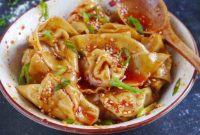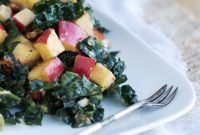In the culinary tapestry of Asian cuisine, ShortcutSesame Butter Noodles stand as a testament to the harmonious blend of simplicity and taste. Originating from the vibrant streets of East Asia, this delectable dish has captivated palates worldwide with its rich, nutty flavor and textural intrigue.
Let’s delve into the history, variations, and culinary artistry that make ShortcutSesame Butter Noodles a beloved dish.
With its roots in ancient China, ShortcutSesame Butter Noodles have evolved over centuries, embodying the essence of culinary innovation. The dish’s popularity stems from its versatility, allowing for creative interpretations while retaining its core flavors. Whether served as a main course, a side dish, or an appetizer, ShortcutSesame Butter Noodles promise a delightful gastronomic experience.
Overview of Sesame Butter Noodles
Sesame butter is a thick, rich paste that is a common ingredient in many cuisines around the world. It is made from ground sesame seeds, which are high in protein, fiber, and healthy monunsaturated and polyunsaturated fatty acids. Sesame butter is also rich in lignans, which are antioxidant compounds that have been linked to numerous health benefits, including reducing the risk of heart disease, stroke, and some types of cancer.
Cultural Significance and Usage
Sesame butter is an integral part of various cuisines worldwide, especially in China, Japan, and Southeast Asia. In Chinese cuisine, it is commonly used in noodle dishes, such as sesame butter noodle soup. In Japanese cuisine, sesame butter is often used in salad dressings and dipping sauces.
In Southeast Asian cuisine, it is commonly used in satay sauce, a spicy dipping sauce served with a variety of dishes, including meat and vegetables.
Ingredients and Preparation
Sesame butter is a versatile ingredient that can be used in a variety of dishes. It is commonly used as a dipping sauce, salad dressing, marinade, or ingredient in stir-fries and noodle dishes. Sesame butter can be made from hulled or unhulled sesame seeds, with the former resulting in a lighter-colored paste with a milder flavor and the latter in a darker, more flavorful paste.
The basic ingredients for sesame butter are ground sesame seeds, salt, and oil. Additional ingredients may be added to enhance flavor, such as honey, sugar, or soy sauce.
Recipe Variations
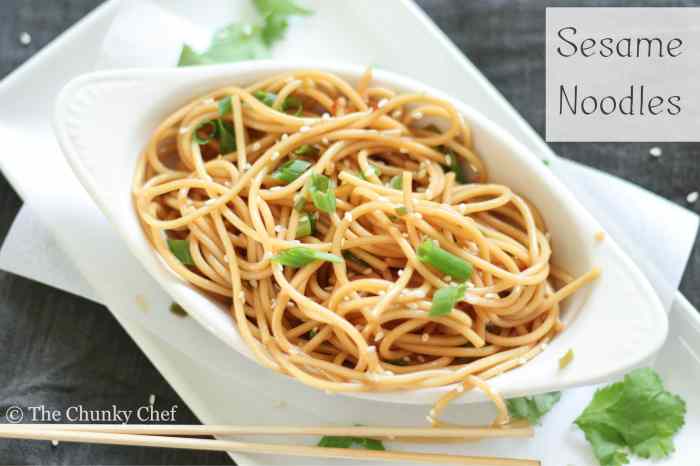
Sesame butter noodles, with their nutty flavor and creamy texture, offer a delectable canvas for culinary creativity. The classic recipe forms the foundation for an array of variations, each adding unique flavors and textures to the dish.
Classic Sesame Butter Noodles
A classic sesame butter noodle recipe typically features simple ingredients like cooked noodles, sesame butter, soy sauce, rice vinegar, and sesame oil. The noodles are tossed in a flavorful sauce made from these ingredients, resulting in a dish that is both satisfying and easy to prepare.
Variations on the Recipe
The classic recipe provides a solid foundation for experimentation. Creative variations can include:
- Different Types of Noodles: Experiment with various noodle types such as udon, ramen, or soba to create distinct textures and flavors.
- Vegetable Additions: Incorporate an array of vegetables like broccoli, carrots, bell peppers, or spinach to add color, texture, and nutritional value.
- Sauce Variations: Explore different sauces by adding ingredients like chili oil, ginger, garlic, or hoisin sauce to create unique flavor profiles.
Key Differences
Variations in sesame butter noodle recipes primarily lie in the choice of noodles, vegetables, and sauces. These variations result in distinct flavor profiles and textures, catering to diverse preferences and dietary needs.
Culinary Techniques and Tips
Mastering the art of sesame butter noodles requires attention to detail and a harmonious balance of flavors. From boiling the noodles to crafting the perfect sauce, each step contributes to the overall success of this delectable dish.
Boiling the Noodles
Begin by selecting high-quality noodles, such as ramen or udon, that will hold their texture during cooking. Bring a large pot of salted water to a rapid boil and carefully add the noodles. Stir gently to prevent clumping and cook according to the package instructions.
Drain the noodles in a colander and rinse them under cold water to stop the cooking process and prevent them from becoming sticky.
Preparing the Sauce
The sauce is the heart of sesame butter noodles, and achieving the perfect balance of flavors is crucial. In a mixing bowl, whisk together smooth and creamy sesame butter, soy sauce, rice vinegar, and a touch of honey or sugar for sweetness.
Add a splash of sesame oil for a nutty aroma and a hint of chili oil for a subtle kick. Adjust the seasonings to your taste preferences.
Assembling the Dish
To assemble the noodles, toss the cooked noodles in the prepared sauce until they are evenly coated. Transfer the noodles to individual bowls or plates and garnish with a sprinkle of chopped green onions, toasted sesame seeds, and a drizzle of sesame oil.
For added texture and flavor, consider topping the noodles with roasted peanuts, crumbled tofu, or shredded chicken.
Health Benefits and Nutritional Information
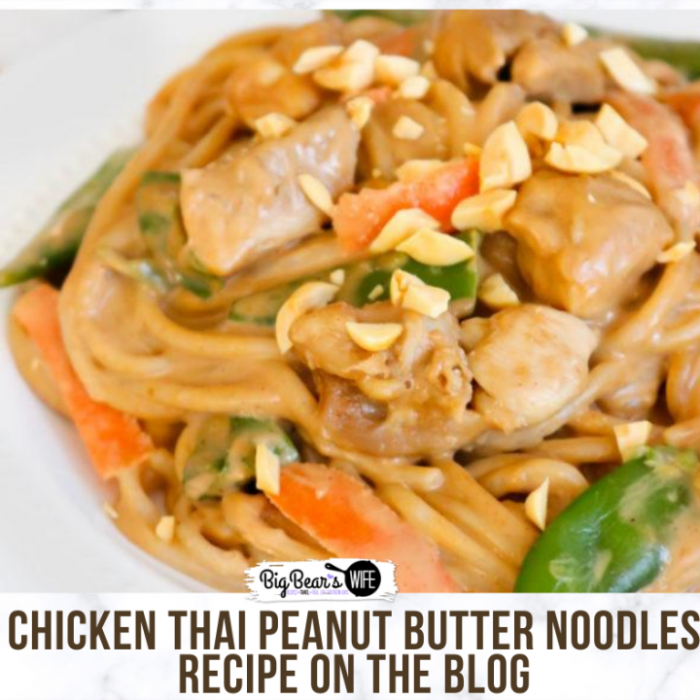
Sesame butter noodles, like other noodle dishes, provide a balance of carbohydrates, proteins, and fats. The key ingredients, sesame butter and noodles, offer unique nutritional benefits.
Nutritional Value of Sesame Butter Noodles
A serving of sesame butter noodles contains approximately:
- Calories: 350-400
- Carbohydrates: 45-50 grams
- Protein: 15-20 grams
- Fat: 10-15 grams
- Fiber: 5-10 grams
- Sodium: 500-600 milligrams
Health Benefits of Key Ingredients
- Sesame Butter: Rich in healthy fats, including polyunsaturated and monounsaturated fats, which can help lower cholesterol and reduce the risk of heart disease.
- Noodles: Provide carbohydrates for energy and can be a good source of fiber if made from whole wheat or other whole grains.
- Vegetables: Often added to sesame butter noodles, such as broccoli, carrots, and bell peppers, are rich in vitamins, minerals, and antioxidants.
Comparison to Other Noodle Dishes
Compared to other popular noodle dishes, sesame butter noodles have a similar nutritional profile. However, the use of sesame butter adds a unique flavor and nutritional boost, providing heart-healthy fats and a nutty taste.
Making the Dish Healthier
- Use Whole Wheat Noodles: Opt for whole wheat or other whole grain noodles to increase fiber and nutrient content.
- Reduce Oil: Use less oil in the preparation to reduce fat content without compromising flavor.
- Add More Vegetables: Include a variety of vegetables to boost the dish’s nutritional value and add color and texture.
Presentation and Serving Ideas
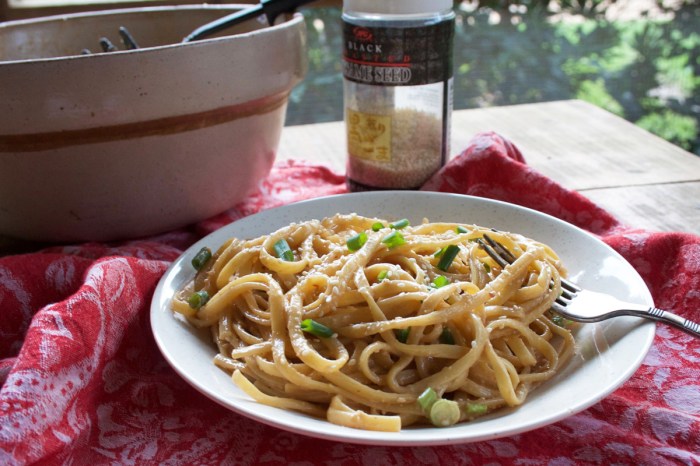
Elevate the visual appeal of sesame butter noodles by incorporating vibrant ingredients and garnishes. Experiment with colorful vegetables, herbs, and spices to create a visually stunning dish.
Sesame butter noodles can be served in various ways to suit different occasions and preferences. As a main course, pair it with a side of protein, such as grilled chicken or tofu, to make a complete meal. Alternatively, serve it as a side dish to complement grilled meats, fish, or vegetarian dishes.
Sesame butter noodles can also be served as an appetizer or snack, especially when presented in small portions or as finger food.
Etiquette and Cultural Customs
Eating sesame butter noodles is a delightful experience that can be enhanced by following certain etiquette and cultural customs. When using chopsticks, hold them correctly and avoid making loud noises while eating. If you are unsure how to use chopsticks, ask for a fork or spoon.
In some cultures, it is considered polite to slurp noodles, as it is a sign of appreciation for the food. However, it is important to be mindful of the volume of your slurping and to avoid disturbing others at the table.
Cultural and Regional Variations
Sesame butter noodles, a versatile dish with a rich history, has been adapted and transformed across various cultures and regions, resulting in unique flavor profiles and culinary interpretations.
Regional Variations
In China , sesame butter noodles are a staple dish in many regions. In Sichuan , the noodles are tossed in a spicy and aromatic sauce made with sesame butter, chili oil, and minced garlic. In Beijing , they are served with a milder sauce that includes sesame butter, soy sauce, and vinegar.
In Taiwan , sesame butter noodles are often served with a thick and creamy sauce made with sesame butter, peanut butter, and soy milk.
In Japan , sesame butter noodles are known as “goma-dare udon” and are typically made with a light and flavorful sauce made with sesame butter, soy sauce, and mirin. In Korea , sesame butter noodles are called “jajangmyeon” and are served with a thick and savory sauce made with sesame butter, black bean paste, and vegetables.
In Vietnam , sesame butter noodles are known as “bun bo xao lan” and are made with a stir-fried sauce that includes sesame butter, beef, and vegetables.
In Southeast Asia , sesame butter noodles are often served with a rich and flavorful sauce made with sesame butter, coconut milk, and spices. In Indonesia , sesame butter noodles are called “mie goreng” and are typically made with a sweet and savory sauce that includes sesame butter, soy sauce, and kecap manis.
In Malaysia , sesame butter noodles are known as “char kway teow” and are made with a flavorful sauce that includes sesame butter, soy sauce, and shrimp paste.
Culinary Influences
The cultural influences that have shaped the regional variations of sesame butter noodles are diverse and complex. In China , the dish is believed to have originated during the Tang Dynasty (618-907 AD) when sesame butter was used as a condiment for noodles.
The dish was later introduced to other parts of Asia, where it was adapted and transformed to suit local tastes and preferences.
In Japan , sesame butter noodles were influenced by the country’s Buddhist tradition, which emphasizes the use of simple and natural ingredients. The light and flavorful sauce used in Japanese sesame butter noodles reflects this philosophy. In Korea , sesame butter noodles were influenced by the country’s strong culinary tradition of using fermented ingredients.
The thick and savory sauce used in Korean sesame butter noodles is made with black bean paste, a fermented soybean paste that adds a unique depth of flavor.
In Southeast Asia , sesame butter noodles were influenced by the region’s diverse culinary traditions. The rich and flavorful sauce used in Southeast Asian sesame butter noodles is a reflection of the region’s love for bold and aromatic flavors.
The use of coconut milk and spices in these sauces adds a unique tropical twist to the dish.
Accompaniments and Side Dishes
Sesame butter noodles, with their rich, nutty flavor and tender texture, can be complemented by a variety of side dishes to create a balanced and satisfying meal. Side dishes not only add flavor and visual appeal but also provide essential nutrients and textures to enhance the overall dining experience.
Vegetables
Fresh or cooked vegetables are excellent accompaniments to sesame butter noodles. Their vibrant colors and crisp textures add contrast to the smooth and creamy noodles. Steamed broccoli, sautéed green beans, or a refreshing cucumber salad are all great options.
Protein
For a more substantial meal, consider adding a protein source to accompany the sesame butter noodles. Grilled chicken, tofu, or shrimp are popular choices that pair well with the nutty flavor of the noodles.
Sauce or Dressing
A flavorful sauce or dressing can enhance the taste of sesame butter noodles. A simple soy-ginger sauce, a tangy chili sauce, or a creamy peanut sauce can add an extra layer of flavor and complexity to the dish.
Garnishes
Fresh herbs, such as cilantro or scallions, can be sprinkled on top of sesame butter noodles to add a pop of color and freshness. Toasted sesame seeds or crushed peanuts can also be used as garnishes, adding a nutty flavor and texture.
Closing Summary
As we conclude our culinary exploration, it’s evident that ShortcutSesame Butter Noodles are a testament to the boundless creativity and artistry that exist within the realm of Asian cuisine. Their simplicity and versatility make them a favorite among home cooks and culinary enthusiasts alike.
Whether you prefer classic or contemporary variations, ShortcutSesame Butter Noodles offer a journey of flavors that will leave you craving more. So, embrace the culinary adventure and indulge in the delectable delight of ShortcutSesame Butter Noodles, a dish that truly captures the essence of culinary artistry.
FAQ
What are the key ingredients used in ShortcutSesame Butter Noodles?
The foundation of ShortcutSesame Butter Noodles lies in a harmonious blend of sesame paste, soy sauce, rice vinegar, sugar, and chili oil. These ingredients, when combined, create a rich and flavorful sauce that coats the noodles, resulting in a symphony of taste.
Can I use different types of noodles for this dish?
Absolutely! ShortcutSesame Butter Noodles are incredibly versatile, allowing you to experiment with various types of noodles. Rice noodles, wheat noodles, or even soba noodles can be used to create unique textural experiences. The choice is yours, depending on your personal preference and culinary creativity.
How can I enhance the flavor of my ShortcutSesame Butter Noodles?
There are endless possibilities to elevate the flavor of your ShortcutSesame Butter Noodles. Try incorporating fresh herbs like cilantro or scallions for an aromatic touch. To add a spicy kick, consider using chili flakes or Sriracha sauce. Roasted peanuts or sesame seeds can also add an extra layer of texture and flavor.


